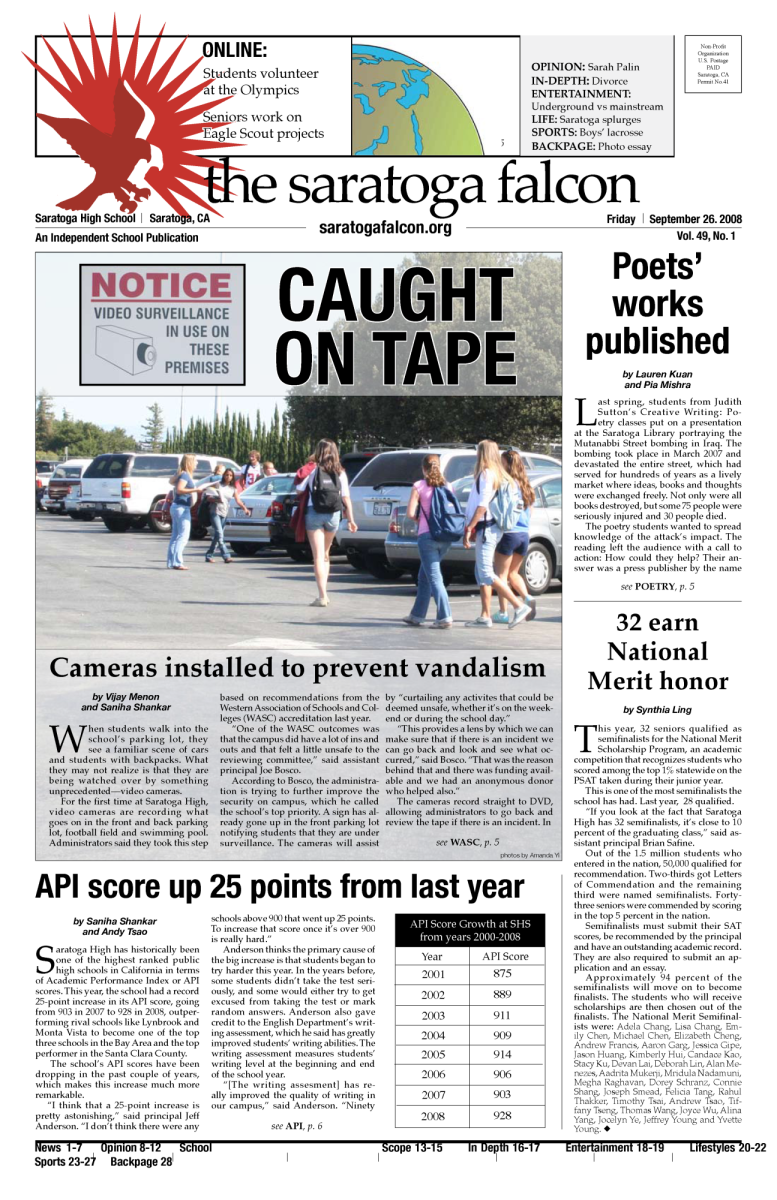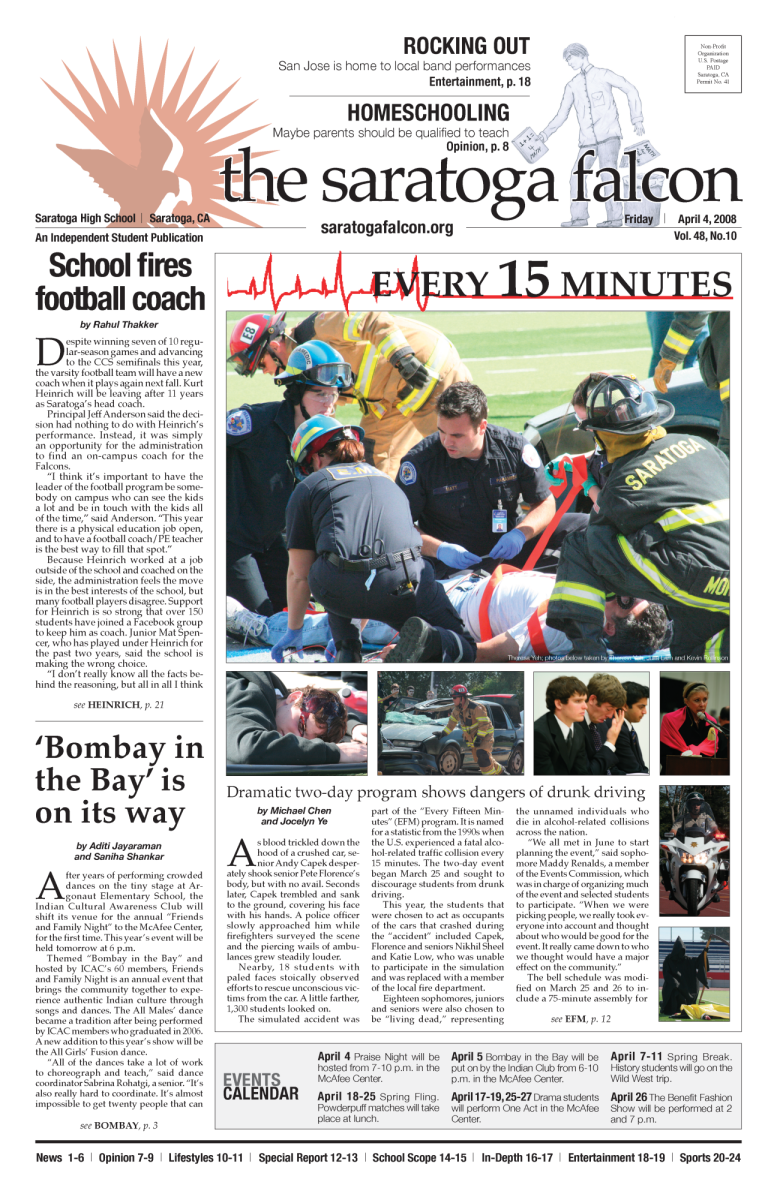Last year, junior point guard Jane Loo shouted out encouragement from the sidelines of the basketball court, taking photos and trying to coach her teammates from the bench. She wanted to be playing with her team, but her injury — a calf contusion — forced her to sit out.
“I wanted to play so bad, but I just couldn’t,” Loo said. “I felt like I wasn’t doing my job. I got injured and I felt like I had let the team down.”
Like Loo, many athletes experience injuries that keep them out from the sport they love and hinder their goals such as playing in college or becoming a starter. However, the pressure to succeed often causes players to ignore the severity of an injury and continue playing, disregarding the necessity to rest and making the original injury worse.
After sitting out for six weeks from December to February, Loo was supposed to play for the last two minutes every quarter during her first game back, a home league game against Cupertino; however, Loo felt the pressure to continue playing, and when the game went into overtime, Loo stayed on the court and worsened her injury.
Loo said that the pressure came from her goal to be on the all-time scoring wall — which lists the record number of rebounds, points, etc. for an individual basketball player — and lead in as many categories as possible. At the rate she was going freshman year, Loo thought she would stand near the top of the board in many categories. Having missed so much playing time sophomore year, she says she has to work twice as hard to have a chance.
“I felt good about my calf,” Loo said. “I felt like I could do it all but I didn’t realize that I was going in too early. Now I understand that even if it feels good, I still have to rest; I still have to ice. I have to be more careful.”
Fortunately, her goal of playing basketball in college hasn’t been affected, as colleges mainly focus on performance from junior year and film clips from games.
TP.E teacher and athletic trainer Liz Alves urges athletes to see either her, an athletic trainer, or a sports doctor immediately after getting injured. She hopes they do the recommended exercises and follow the recommended recovery path in order to decrease the risk of re-injury.
If an injury is severe enough to require seeing a doctor, the school mandates an official letter of clearance for students to return to a sport. If the athlete has a concussion, they must follow a state-mandated protocol detailing the process for resuming playing.
According to Alves, the severity of injury depends on how much the injury impacts an athlete’s ability to move, the level of pain and whether there is a physical trauma as a broken bone or torn ligament, muscle, or tendon.
She acknowledged that athletes feel pressure to play, often for goals such as personal improvement or recruitment, during recovery and may lose conditioning or become less driven.
“Getting injured is frustrating and depressing,” Alves said. “Often athletes feel as if they have lost their identity after a serious injury that prevents them from playing. It's hard to stay motivated when you can't actually play.”
But, she said that returning to a sport before proper healing has occurred can result in permanent physical problems and can cause the athlete stress and anxiety. She hopes they take time off and then resume playing when they are truly ready.
Varsity girls’ basketball coach Danny Wallace said that some athletes hide injuries from their coaches or parents due to a fear of being forced to stop playing the sport. He urges them to take time to rest and maintain flexibility and mobility by stretching, rolling the muscles out and doing physical therapy.
“Don’t ever count yourself out,” Wallace said. “You might think that you’re hurting your team or letting people down, but in the end you only have one body. Your teammates are always going to love you and your parents and your coaches aren’t going to be upset with you.”
Last year, nearly half of the girls’ basketball team was injured throughout the season. Wallace said that while the team would have likely advanced further in CCS if everyone had been healthy, the girls still maintained a positive attitude and competed the best they could, making it as far as semifinals.
“It’s not fun to see a player get hurt or injured because they work so hard and put so much time and effort [into the sport] and it just gets taken away from them,” Wallace said. “You feel bad for them because it’s something they love; they just want to be out there competing. It gives them an outlet and all of a sudden, they can’t do it.”
Another student athlete, junior Allison Ha, who participates in the 100m, 200m and 4-by-100 relay race along with long jump in track and field, continued running because she said she hated feeling like she wasn’t contributing to the team despite repeatedly straining her quad.
“I didn’t want my coach to think that I was a weak link on the team,” she said. “I felt like the team needed me to race. I wanted to help out because I felt like what’s the point of being in the sport if I’m not doing anything to help the team?”
Ha pulled her quad muscle during a practice last April, but kept on running as the pain wasn’t severe. The next day, she felt sharper pain and decided to take it easy during practice. When she started running again the following week, the pain increased so Ha took another short break, and then began practicing again.
Instead of taking a prolonged break to ensure that she was healthy before competing, Ha continued this cycle throughout the season, repeatedly reinjuring her leg and worsening the injury.
While Ha had originally planned to sit out the league meets, the coaches asked her to run the relay race as there was no replacement for her.
“I pushed through the relay even though after the first two strides I felt my quad snap and my muscle was in excruciating pain,” she said, “but I finished the race because I didn’t want to be the one to slow down the relay. Afterwards I could barely walk so I spent the rest of the meet just sitting there.”
Due to her injury, Ha was unable to perform to her full potential and became discouraged, feeling like track practice was a waste of time.
“I felt really annoyed and frustrated because I didn’t like not being able to race,” Ha said. “I felt super behind because instead of getting first, second and third place consistently like I would the year before, I could barely run a 100 because my leg would just give out in the middle.”
After the track season ended, Ha saw a doctor who told her that she would be out for six months and may have sustained permanent damage to her leg. While she is recovering, her injured leg remains extremely weak compared to the rest of her body.
While severe injuries can translate to long-lasting impacts, even minor injuries can prevent athletes from performing their best.
Right before the Santa Clara Valley Athletic League track finals (the qualifying meet for the Central Coast Section competition) last May, senior runner Shivam Verma began getting blisters on his feet from the lack of cushioning in his shoes. Every time he ran, he would get burning sensations on his feet, which significantly slowed him down.
He felt frustrated because he thought he had a good chance of being one of the top six runners for the 1600 meter event and qualifying for CCS. Instead of resting, he decided to compete, even though he knew that his decision could make the injury worse.
“I was hoping that maybe, just maybe, my adrenaline could take over and help out,” he said.
Even though his time was much worse than his personal best, Verma remained motivated as he knew he had the chance to compete at CCS next year.
“Pushing through injuries will just make the injuries worse and the recovery time longer,” he said, realizing he should have taken time off. “Any nagging injury that pops up shouldn’t be ignored and should be brought up immediately to a trainer or a coach.”
Wallace hopes athletes don’t use injuries as excuses for not playing well. He wants them to push through aches and soreness, but sit out for injuries that could become worse without proper healing.
“Overall, listen to your body and don’t worry about what other people think because if you’re not feeling 100 percent, you can’t walk out on the court and go full speed,” he said.



























